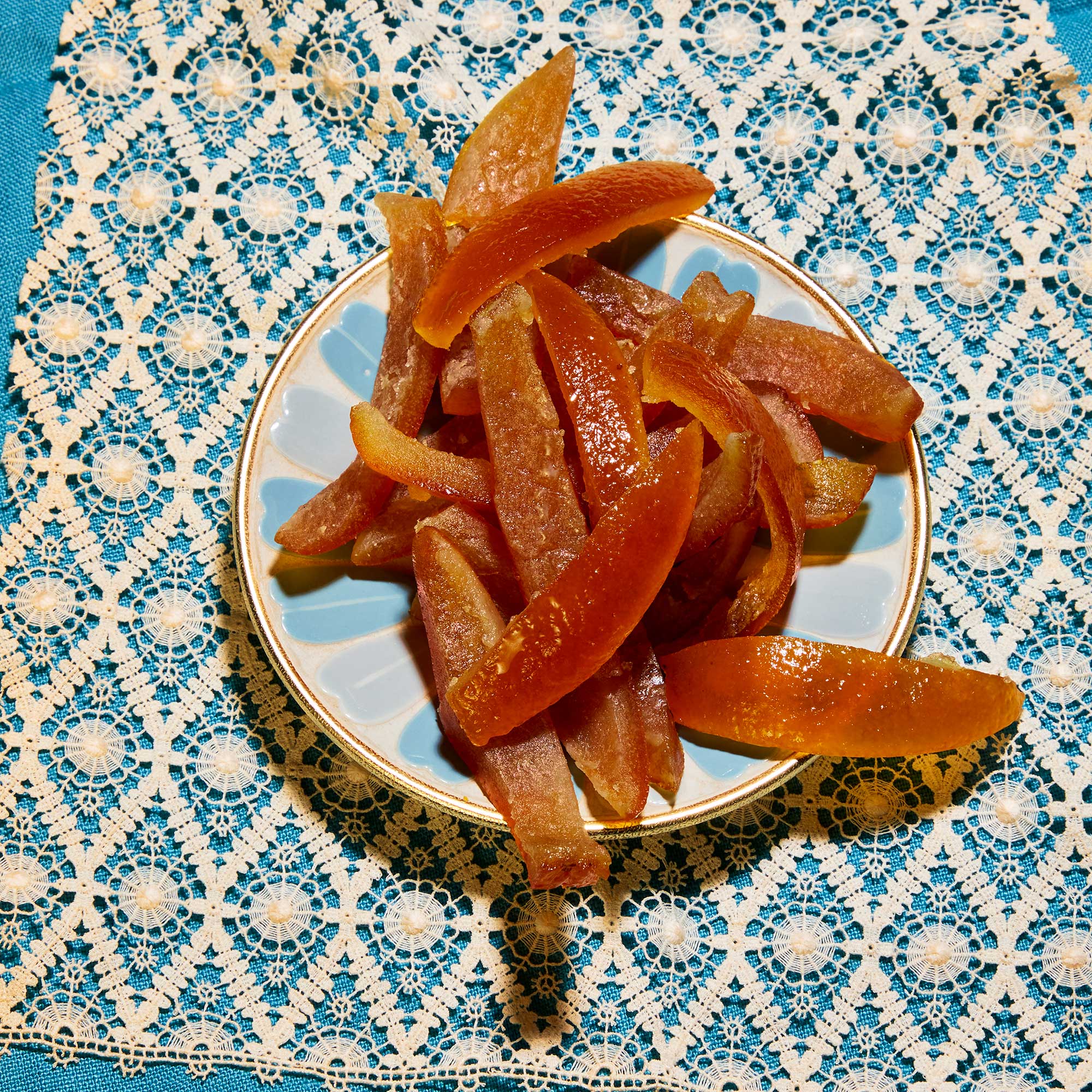As much as we love sharing recipe inspo from our favorite foodies, there’s also a lot to be said for brushing up on the techniques that make a plant-forward, low-waste kitchen hum. That’s why we’re launching Technique Toolbox, a new series where the culinary pros teach us their can’t-miss tips, tricks, and methods.
First up is a delectable technique from Victoria Granof, whose upcoming cookbook, Sicily, My Sweet, contains her family recipe for candied orange peel. The treat centers on a well-tested process that’ll help ensure you never trash citrus rinds again. “The thing about the orange rind is it’s something that you have all the time,” Granof says. “It’s very economical. In Sicily, candied peel is treated like candy; it’s one of the things you have for teatime, and it’s a symbol of hospitality. When people come over, you give them a little bit of that. My grandmother made them, and my great-grandmother made them.”
The technique
Rendering tough, bitter citrus rind into candy requires only salt, sugar, and water—though it does take time and patience to get it just-so. It starts with boiling the peels in salted water for a few minutes. “That opens up the pores and softens it a little bit,” Granof explains. Then you simmer the peels in a sugar syrup, kill the heat, and let them steep overnight. This is where that patience comes in: You repeat this process for three days. But don’t let that stop you: “All you have to do each day is bring it up to the boil, simmer it for a short amount of time, and let it sit there.”
Once that’s done, you have two options: Drain the pieces and dry them on a rack (reserving the syrup), or store them in the syrup. “The syrup’s really good,” Granof adds. It’s great in cocktails, over shaved ice, mixed with seltzer water, or drizzled on pancakes or yogurt.
Why it works
The process is super simple, but Granof warns that it can’t be rushed. “I’ve seen people try to do it faster—there are TikTok videos—but it gets tough and bitter,” she says. Citrus pith contains pectin, a naturally occurring fiber, so as you simmer that rind, you’re releasing it into the water, which thickens the syrup and weakens the structure of the peel. As things cook, the cells in the rind open up and drink in the sugar in the syrup, becoming soft, sticky, and deliciously candylike.
Variations and uses
This candying method will work with any other thick-skinned citrus, but unfortunately it doesn’t get along with limes. Those green beauties have thinner skins, so there’s not enough of the membrane in there.
As for what to do with all that fresh, zingy candy? “I’ve chopped them up and put them in cookies and cakes,” Granof says, “and they’re really good if you make a nut brittle and put them in there. And they’re really nice in shortbread cookies.”

